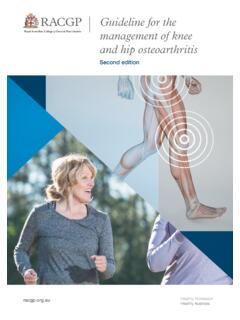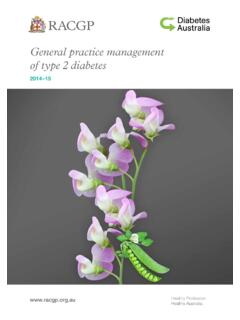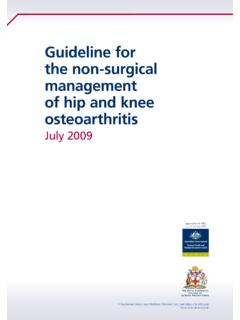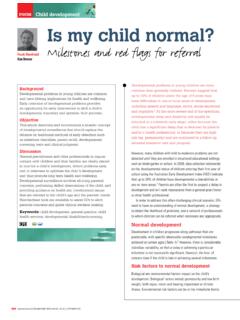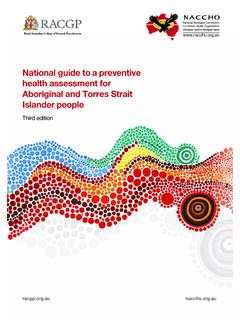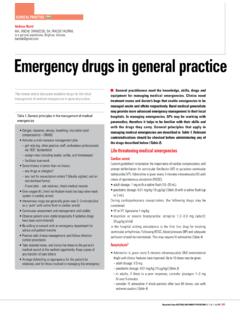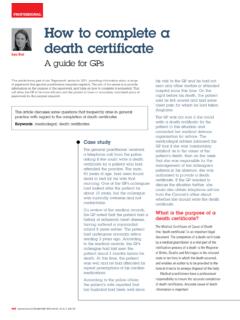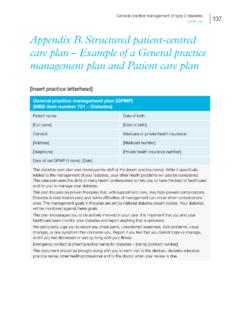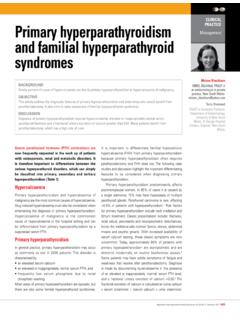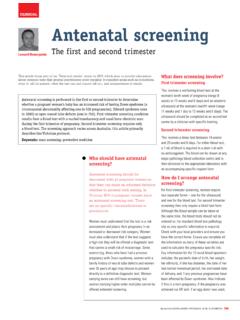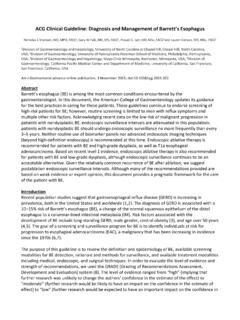Transcription of Helicobacter pylori - the latest in diagnosis and treatment
1 THEME upper abdominal pain Bj rn Stenstr m Aruni Mendis Barry Marshall MD, PhD, is Research Fellow, Department PhD, DIC, is Manager, Scientific & FRACP, FAA, FRS, Nobel Laureate, is Clinical of Gastroenterology, Sir Charles Gairdner Regulatory Affairs, Tri-Med Australia, Professor of Microbiology, The University of Hospital, Perth, Western Australia. bjorn. Perth, Western Australia. Western Australia. Helicobacter pylori The latest in diagnosis and treatment Helicobacter pylori is strongly linked to peptic ulcer Background disease and is classified as a group 1 carcinogen by the World European and North American guidelines on the management Health Organization's International Agency for Research on of Helicobacter pylori infection were updated in 2007.
2 New Cancer. Socioeconomic level seems to be the major diagnostic methods have been introduced and in Australia, the recommended therapy choices in cases of penicillin allergy determinant of risk of infection. In Australia, 25 30% of the and for second line treatment are only accessible through the population is infected, with the prevalence increasing with Therapeutic Goods Administration Special Access Scheme. age. In some indigenous communities, prevalence is 2 3 times higher than in nonindigenous Objective The article aims to update general practitioners on recommendations for testing and treating H. pylori infection, The American College of Gastroenterology (ACG) and the European practical aspects of diagnostic methods, proof of cure testing Helicobacter Study Group (EHSG) presented updated guidelines on to prove eradication, and the management of eradication failure the management of H.
3 pylori infection in ,3 A particular problem and recurrent infection. for Australian doctors managing H. pylori infection is restricted access to globally recommended drug therapies. However, commonly Discussion recommended alternative drug therapies can be prescribed through the Urea breath tests are the best way to diagnose current H. pylori infection. Serology should primarily be used when UBTs Australian Therapeutic Goods Administration Special Access Scheme may be false negative, eg. current bleeding ulcer or H. pylori (TGA-SAS). Another problem for general practitioners had been the suppressing drugs. For children who cannot use UBTs, stool restricted indications for requesting the urea breath tests (UBTs); from antigen tests may be useful.
4 In case of eradication failure with November 2006 there are no Medicare restrictions on UBT use. standard clarithromycin based therapy, bismuth based quadruple therapy is the favoured second line therapy. Preparing the patient Indications for diagnosing and treating H. pylori for possible side effects is important as poor compliance and infection antibiotic resistance are the main reasons for eradication failure. Established indications for testing and treating H. pylori infection are presented in Table 1. For a number of other conditions the evidence is currently insufficient (Table 2). Peptic ulcer disease and ulcer bleeding There is overwhelming evidence supporting the merits of H. pylori eradication in patients with peptic ulcer disease (PUD).
5 Furthermore, a recent Cochrane systematic review demonstrated that maintenance of acid suppression was not routinely necessary to prevent ulcer recurrence after successful H. pylori eradication and ulcer NSAIDs or aspirin The recommendations for H. pylori eradication in nonsteroidal anti-inflammatory drug (NSAID) users are summarised in Table 3. 608 Reprinted from Australian Family Physician Vol. 37, No. 8, August 2008. The results of H. pylori eradication in NSAID users are conflicting. Table 1. Proven indications for the diagnosis and treatment of H. pylori Helicobacter pylori and NSAIDs independently and significantly increase the risk of peptic ulcer bleeding. The risk of ulcer bleeding is Peptic ulcer disease (active or confirmed history).
6 Further increased when both factors are present. Helicobacter pylori A test and treat strategy is appropriate for patients with eradication seems to have a different effect in chronic and naive uninvestigated dyspepsia who are <45 years of age and NSAID ,6 who do not have any alarm features'. Low grade gastric MALT lymphoma Dyspepsia After endoscopic resection of early gastric cancer A test and treat strategy for H. pylori infection is recommended for First degree relatives of patients with gastric cancer patients with uninvestigated persistent dyspepsia who are less than 45 years of age without any of the following alarm features': bleeding Table 2. Conditions where evidence is inconclusive for diagnosis anaemia and treatment of H.
7 pylori early satiety unexplained weight loss I nvestigated nonulcer dyspepsia (ie. 'functional dyspepsia': dyspepsia patients who have no ulcer at endoscopy). progressive dysphagia With NSAID use (see Table 3). odynophagia Gastro-oesophageal reflux disease (GORD). recurrent vomiting Populations at higher risk for gastric cancer (Japan and family history of gastrointestinal cancer parts of China). previous esophagogastric Unexplained iron deficiency anaemia in adults Helicobacter pylori eradication may be appropriate for patients with Idiopathic thrombocytopenic purpura investigated nonulcer dyspepsia when H. pylori positive. The benefit is modest but significant, and economic modelling suggests that it is cost effective. An estimated 7 15 infected patients need to be Table 3.
8 NSAID and H. pylori eradication treated (NNT) to cure symptoms of one such patient. The relative risk (RR) of remaining symptomatic is In areas of low H. pylori H . pylori eradication is of value in chronic NSAID users prevalence (<20%), proton pump inhibitor (PPI) empirical treatment is but is insufficient to prevent NSAID related ulcer disease an equivalent ,9 completely In naive NSAID users H. pylori eradication may prevent GORD and long term PPI treatment peptic ulcer and bleeding For patients with a history of an ulcer complication who There is no clear evidence that eradication of H. pylori infection require subsequent therapy with an NSAID or aspirin, PPI. causes gastro-oesophageal reflux disease (GORD) or exacerbates maintenance treatment is better than H.
9 pylori eradication GORD. Helicobacter pylori eradication therapy should not be withheld in preventing ulcer recurrence and/or bleeding. Co-therapy due to concerns of creating or worsening GORD. Routine testing for may be an option H. pylori is not recommended in GORD. However, in patients receiving Patients taking long term aspirin and who bleed should long term maintenance treatment with PPIs, H. pylori testing should be tested for H. pylori , and be treated for the infection if be considered. Profound acid suppression affects the pattern and positive distribution of gastritis favouring corpus dominant gastritis and may lead to atrophic gastritis. Helicobacter pylori eradication halts the neoplastic changes (atrophic gastritis and intestinal metaplasia ) of progression of atrophic gastritis and may reverse the process of the gastric mucosa.
10 However, definite evidence on whether H. pylori atrophy therefore decreasing cancer ,11 eradication can reduce the risk of developing gastric adenocarcinoma is lacking. It is likely that cancer risk persists for several years after Mucosa associated lymphoid tissue lymphoma the bacterium is In mucosa associated lymphoid tissue (MALT) lymphoma, the most Extra- intestinal disease common gastrointestinal lymphoma, H. pylori eradication can cure the majority of patients and is now recognised as the treatment of choice Both EHSG and ACG guidelines state H. pylori infection should be for low grade diagnosed and treated in patients with unexplained iron deficiency anaemia. The EHSG also recommends diagnosis and treatment for Gastric cancer prevention patients with idiopathic thrombocytopenic purpura.
